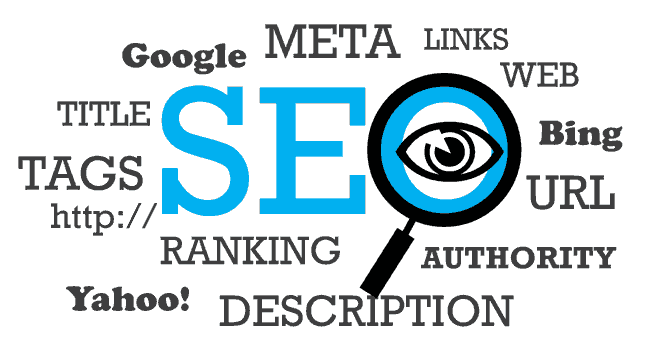Redesigning a website is a detailed project with hundreds of steps requiring thought and decision-making at technical, financial, creative, operational, and strategic levels.
Months of planning, designing, writing, and developing are involved before your website is ready for the world.
Knowing this, it helps to avoid mistakes rather than make them.
One key to making sure your launch goes off without a hitch is to ensure your website speaks the language of search engines—or SEO. You need to ensure that any SEO value you’ve built up with your old website is both retained and enhanced on your new website.
Here are five SEO mistakes to avoid to prevent disasters and unnecessary delays in revamping your website.

Mistake #1: Redesigning Without Goals
Before you start designing or mapping out content, you need to ask yourself what the primary goals and objectives for the new website are.
If your website intends to generate sales leads, your content and user experience need to align with your conversion paths. Inbound marketing programs rely on this. You generate awareness and therefore leads by increasing traffic. This means high-quality content creation, chiefly in the form of blogs and vlogs, social sharing, and creating reasons to keep people coming back to the website.
Define the ideal customer and your target audience(s). Define the core phases that potential customers experience when deciding to purchase your product.
You will be able to define these key elements by asking what the must-have features and components are that will help you accomplish your goals?
Mistake #2: Not Capturing Analytic Benchmarks
You need to establish metrics based on your old website’s performance. Analytics benchmarks can be found in HubSpot or Google Analytics will assist you in goal setting for the new website.
Benchmarks will include time spent on site, overall visits, and average banner click-through rates: B2B publishers who monetize based on ad revenue are chiefly concerned with these.
Visitors to sales conversions of a certain product is another benchmark to note. A B2C company should waste no time and focus the entire user experience toward this right away.
A service-based organization may be more concerned with lead generation and therefore prefer to spend more effort raising awareness outside of its brand.
From an SEO point of view, to retain link equity and any value you’ve built on your current domain, you should benchmark the following metrics at least:
- Total traffic (from organic search, referrals, etc.)
- Conversion rates (ideally each step between traffic and customers)
- Which pages are getting organic traffic (usually mapped to the best keywords)
- Usage metrics (geography, bounce rate, time on site, etc.)
- Inbound links (sites that are linking back to you)
Mistake #3: Choosing the Wrong CMS and Hosting Provider
The right content management system (CMS) is perhaps the single most important factor for a website. Taking the scope of the new site into account, you also have to consider cost, functionality, support, security, reliability, and speed.
To ensure a perfectly optimized website a CMS should have:
Responsive design
Is the website responsive? Can it work seamlessly across any computer, tablet, mobile device, or browser? Google watches for this as an SEO signal.
Functionality
Can you add the right meta tagging or rich schema that search engines use to understand the layout, context, and content of your website?
Analytics
Does the CMS allow you to add analytics functionality or have analytics functionality built in? You need to be able to easily track visits, leads, bounce rates, time on site, and user flows, and build custom reports to answer specific marketing questions.
Support
Do you have access to a support team or an online community if an issue comes up with the CMS? Make sure you know what SMS customer support is going to cost in advance.
Speed
Make sure your website is using an up-to-date CMS with a fast hosting provider, since search engines use site load speed as a ranking factor. HubSpot has a lightning-fast hosting provider
Mistake #4: Not Submitting a Sitemap and other SEO Mistakes
Every website should submit a sitemap to search engines like Google, Bing, and Yahoo. These can be submitted through the respective search engine’s webmaster tools feature. A sitemap shows the URLs for your entire site and helps search engines understand the organization of your website.
And before that, during the web redesign phase, make sure your use redirects properly. Another of the more common SEO mistakes either using 302 (temporary) redirects, or using 301 (permanent) redirects the WRONG way.
If you’re eliminating pages from your old website, you need to redirect your old page to the most relevant new page with similar keywords. This is a much better option than just sending people to your homepage or your blog.
Mistake #5: Not Telling Search Engines About Your Domain Change
You need to tell search engines like Google that your new website is no longer the same. In addition to submitting your new sitemap, use the change of address tool in the Search Console for Google to give them an update.
When submitting your change of address to Google:
- Move your content over to the new domain.
- Verify Google Search Console on the new domain.
- Submit your change of address in Google Search Console.
One More Thing
If you’re not using secure hosting (HTTPS) yet, you need to get with the program. Seriously.
Bad security practices are detrimental to SEO. Search engines will remove your website from their index if your website has been hacked. Make sure your CMS has the right security built in or you are using a security plug-in to avoid this.
Some browsers draw the visitors’ attention to a non-secure warning if your website is not using secured hosting.
As of April 2017, 50% percent of page one search results were on https, so this is the new industry standard. It is important to the website’s ability to rank and to users in general alike.
In summary, when redesigning a website you cannot cut corners and you cannot afford to make SEO mistakes. Every other website designer worth their salt is paying attention to every detail – and you need to do the same.




